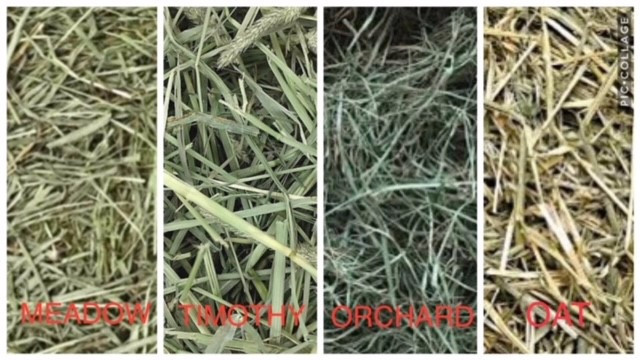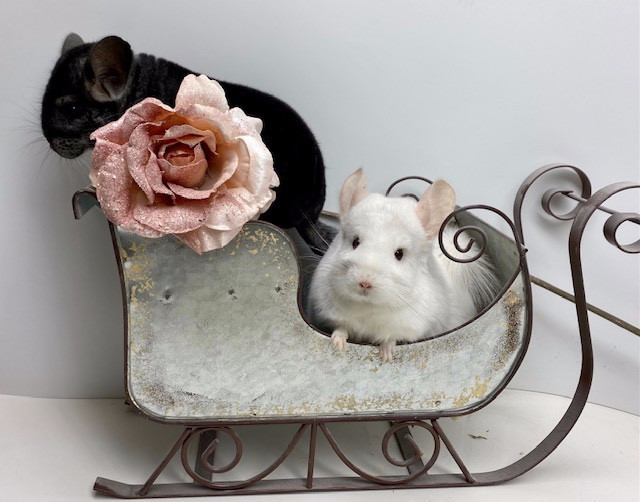Hay plays a very important role in the health of chinchillas and should be the foundation of their diets. Chinchillas are herbivores and need to have food constantly moving through their digestive systems. The fiber in hay aids in this process.
Frequency to Feed Hay
~ A handful of hay keeps the veterinarian away ~
Providing frequent rations of hay to your animals is of great benefit and will go a long ways to keeping them healthy. An unlimited supply of hay has many benefits to your chinchillas:
- It provides the required fiber to aide in digestions,
- keeps their rear teeth ground down,
- provides added nutrients to their diets,
- and keeps them occupied
Importance of Quality Hay / Proper Storage
Hay needs to be selected with care. When selecting hay, look for the following qualities:
- Mold Free (with no evidence of being exposed to mods or excessive moistures after cutting
- Purchased from a reputable farm to ensure proper handling
- Dust free
- Pleasant fragrance (with no musty or dust smells)
- A good majority of the hay should maintain its natural green color
- Fairly pliable
Finding good quality hay can be a difficult task, especially during the “off-season” (winter months). It is important to find as much hay as can be properly stored in late summer to ensure quality hay throughout winter. ChillaBox hand selects their bales of Timothy hay for freshness and quality from the best quality farm sources available.
There have been many studies on the amount of time hay can be stored, and of course is accompanied by factors, such as temperature and weather exposure (sun, rain/snow and wind). An article prepared by University of Kentucky stated that “the amount of energy, protein, calcium, and phosphorus in a bale of hay in dry storage are basically the same after two years of storage as they are after two months of storage”. (Choosing Hay for Horses - Lawrence, Laurie M and Robert J. Coleman).
Types of Hay/Nutritional Value
The most common types of hay fed to chinchillas are timothy, orchard grass, alfalfa and alfalfa-grass mixtures. Oat Hay and Meadow Hay are also good alternatives.Listed below are average nutritional content in different types of hays.This will differ depending on the time of year the hay was cut.“As grasses and legumes advance from the vegetative to the reproductive (seed) stage, they become higher in fiber and lower in protein, digestibility and palatability."(High-Quality Hay Production, Bates, Gary).A 2nd cut timothy or timothy-alfalfa mixture could be considered an ‘ideal cut’ for chinchillas.
Hay Variety Ca:P Ratio Crude Protein Calcium (%) Phosphorus(%) A.D. Fiber (%)
Timothy (avg) 2.2 : 1 6-11 0.38 0.17 30-40
OrchardGrass 1.5 : 1 7-11 0.34 0.23 30-40
Alfalfa (avg) 6.0 : 1 15-22 1.20 0.20 24-34
In your ChillaBox, you will receive an 8 ounce bundle of quality Timothy Hay. As previously discussed, providing frequent rations of hay to your chinchilla is important. Consider providing additional hay beyond what is included in your ChillaBox Timothy Hay; to include Orchard Grass, Oat Hay or Meadow Grass.


